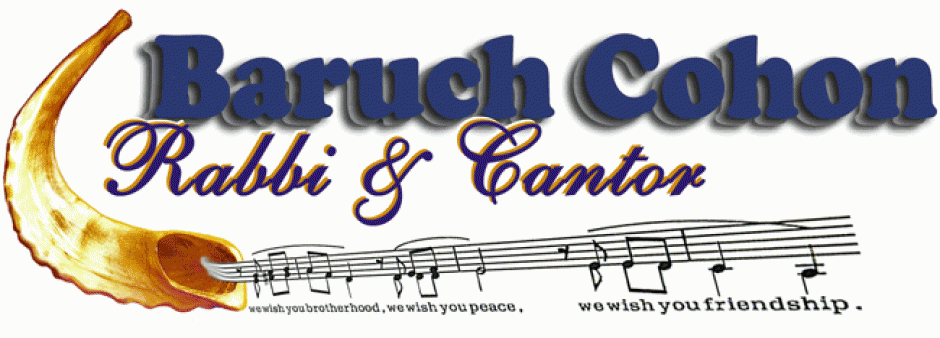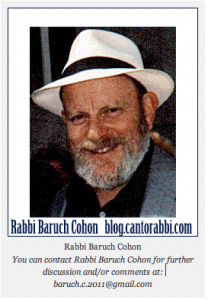AGE OF SERVICE – Emor – Lev. 21-24, by Rabbi Baruch Cohon
This week we will read a section which should sound familiar to anyone who attends services with any regularity. Parts of it get repeated in traditional synagogues on holidays throughout the year, since they detail those celebrations. For me personally, Emor is particularly familiar since I read it at my own Bar Mitzvah and it has stayed in my memory all these years. In addition, my family – all three generations of us, from all over the country – will gather this year for my 90th birthday, which occurs on the Hebrew calendar the day after we read this portion. Their expression of joy and love gives me at least as much inspiration as the eternal message of Emor. Maybe I did something right?
Reviewing the text, we find that it opens with a long list of directives to the Cohanim – Aaron’s descendants, my ancestors. Treated here, we find the physical requirements for male priests to serve in the Temple, the eligibility of their female family members to eat t’rumah – the food that Israelites brought the priests as a sort of religious tax, the conditions required of both the priest and the Temple itself when offerings were made, etc.
Clearly, these mandates concern adults. But no definition of an adult. We do not find here any mention of the age of service. How old does a young cohen need to be when he starts? And at what age can he – or must he – retire?
Elsewhere in Biblical and Talmudic teachings, those questions get answered – not with hard and fast laws, but with differing opinions. For example, in Tractate Khulin, we find several clues. One says that the young cohen is considered eligible to serve when he grows 2 pubic hairs – kind of an ancient Bar Mitzvah age. But the very next line recounts that his fellow priests would not let him serve under the age of 20.
Another opinion is based on the Biblical habit of equating cohanim and leviim – since Aaron and his descendants came from the tribe of Levi; in fact we read that no less than 24 times does Scripture use the term Hacohanim hal’vi’im – “the priests, the Levites.” So as Rashi tells us, a man went into training at 25, began service at 30, and had to retire at 50. That would seem logical for the Levi, since he was part of the Levitic choir and his voice might be less reliable as he got older. But would it apply to a Cohen, whose service more often consisted of slaughtering sacrificial animals?
Still another precedent quotes the word yazkin – a verb from the root zaken, an old man – and defines it as reaching the point where hands and feet shake from old age. That is when a Kohen would have to retire. As the esteemed Rabbi Reuven Lauffer points out, no Kohen would be required to perform a task unless he had the physical strength to do it.
Now to go into modern times, and my own experience. If I first officiated as cantor at High Holiday services at age 17, and, thank G-d, 73 years later I still participated in the public Priestly Blessings (dukhenen) with my son this Passover, would I qualify for service in the Temple?
I hope so. And here’s hoping we all live to see the Temple rebuilt. We are told that the Mashiakh will be able to decide to replace animal sacrifice permanently with sincere prayer. That should enable more kohanim to serve to my age, and hopefully way beyond.



Many blessings to you and your family on this great occasion.
I wish you many more years of good health and service to the Jewish community.
So sorry I will have to miss this once in a lifetime event.
Send my love to everyone.
Meryl